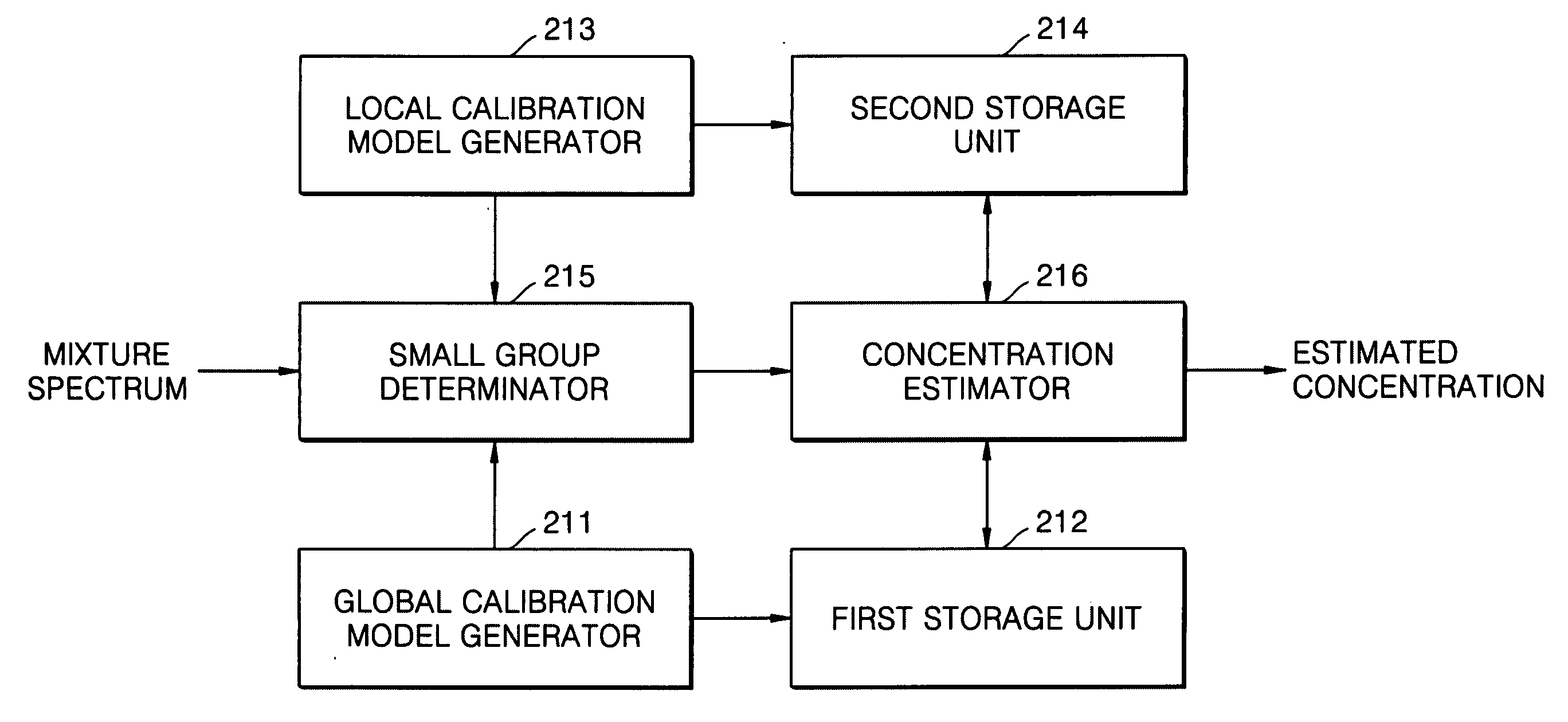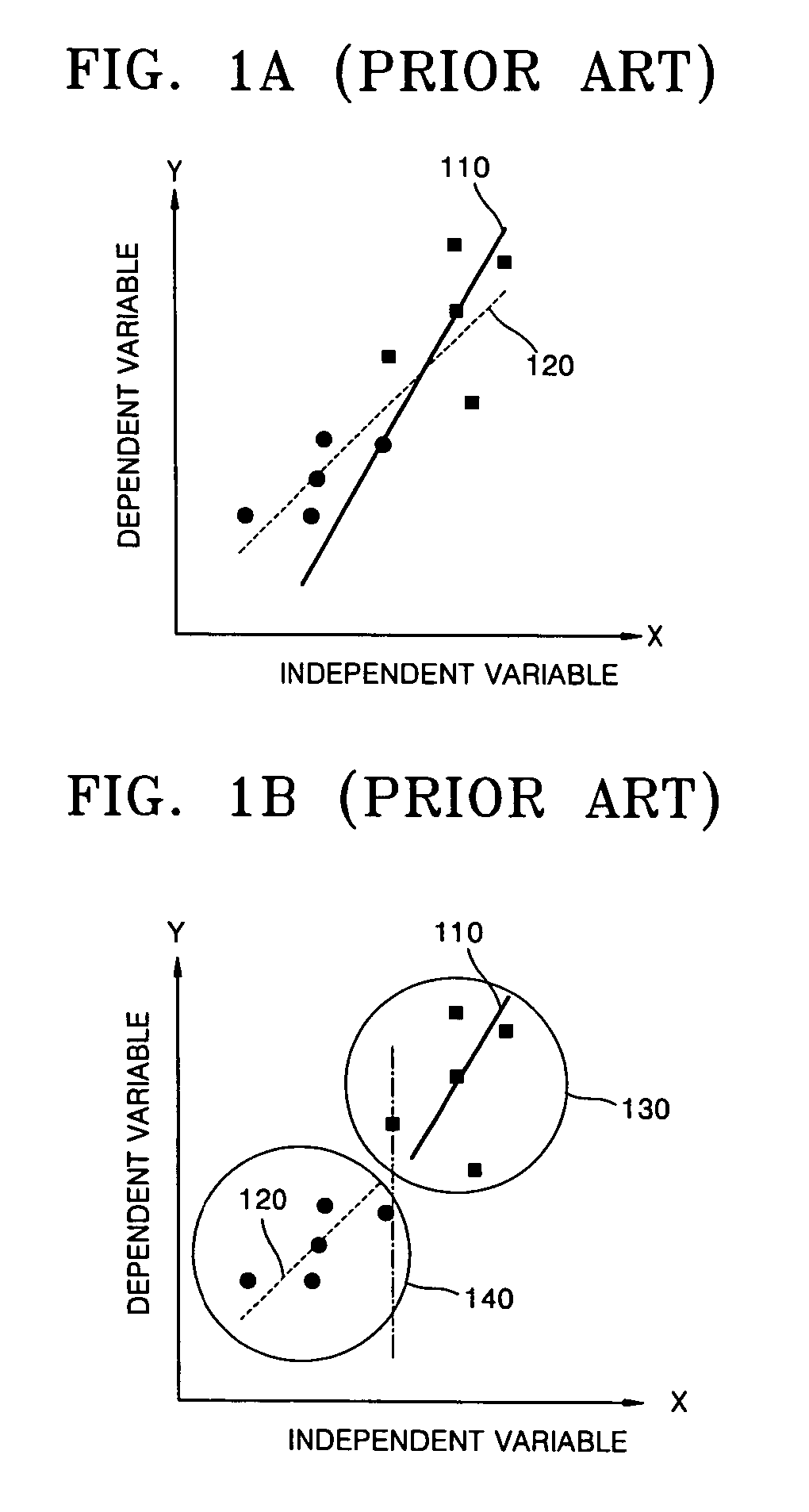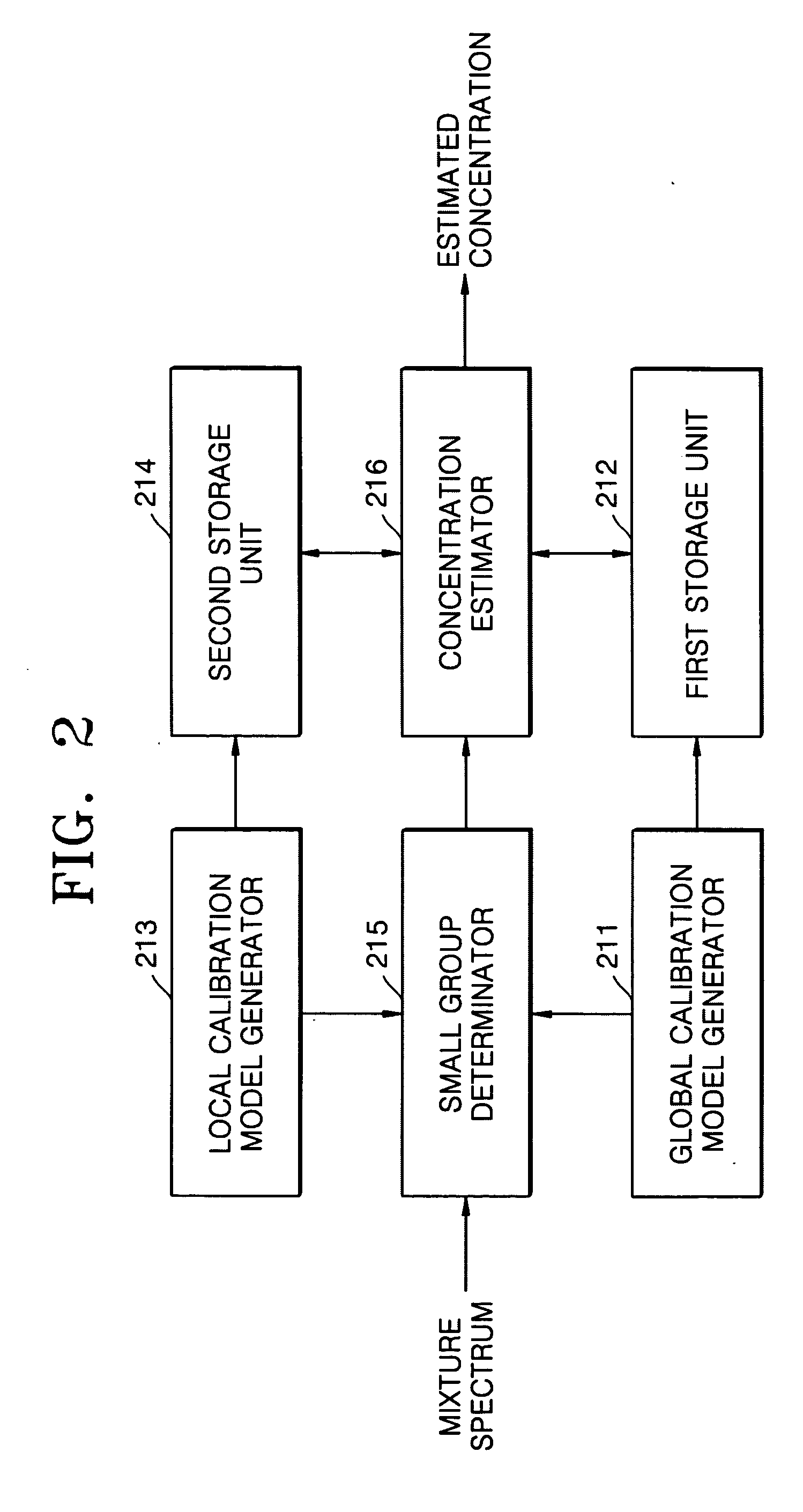Method and apparatus for estimating component concentration of a mixture
a technology of component concentration and mixture, applied in the field of estimating component concentrations of mixtures, can solve the problems of prediction error and noise generation, and achieve the effect of limiting noise propagation and limiting noise propagation
- Summary
- Abstract
- Description
- Claims
- Application Information
AI Technical Summary
Benefits of technology
Problems solved by technology
Method used
Image
Examples
Embodiment Construction
[0027] Korean Patent Application No. 2003-72135, filed on Oct. 16, 2003, in the Korean Intellectual Property Office, and entitled: “Method and Apparatus for Estimating Component Concentration of Mixture,” is incorporated by reference herein in its entirety.
[0028] The present invention will now be described more fully with reference to the accompanying drawings, in which exemplary embodiments of the invention are shown. The invention may, however, be embodied in many different forms and should not be construed as being limited to the embodiments set forth herein; rather, these embodiments are provided so that this disclosure will be thorough and complete, and will fully convey the concept of the invention to those skilled in the art. Like reference numerals indicate like elements throughout.
[0029] In general, when a calibration model, i.e., a regression model, is generated, it is assumed that variables x and y can be represented with a linear regression model as shown in Equation (...
PUM
| Property | Measurement | Unit |
|---|---|---|
| concentration | aaaaa | aaaaa |
| concentration | aaaaa | aaaaa |
| concentration | aaaaa | aaaaa |
Abstract
Description
Claims
Application Information
 Login to View More
Login to View More - R&D
- Intellectual Property
- Life Sciences
- Materials
- Tech Scout
- Unparalleled Data Quality
- Higher Quality Content
- 60% Fewer Hallucinations
Browse by: Latest US Patents, China's latest patents, Technical Efficacy Thesaurus, Application Domain, Technology Topic, Popular Technical Reports.
© 2025 PatSnap. All rights reserved.Legal|Privacy policy|Modern Slavery Act Transparency Statement|Sitemap|About US| Contact US: help@patsnap.com



